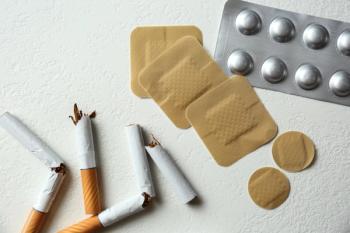
Pharmacies Step Up COVID-19 Safety Measures
Pharmacy Moms Group special task force develops guidelines as precautions are implemented amid the COVID-19 pandemic.
Safety within pharmacies is a priority in the best of times, but it has become essential to ensure that pharmacies and pharmacists do not spread coronavirus disease 2019 (COVID-19) during the pandemic.
To that end, the Pharmacist Moms Group, the largest group of female pharmacists in the United States with more than 31,000 members, set up a special task force that has issued guidelines for pharmacists working in community pharmacies.
“Pharmacist Moms wanted to help prepare pharmacists and pharmacy technicians who may be exposed and provide them with proper support. We need to be proactive as pharmacists to protect ourselves,” Suzanne Soliman, PharmD, BCMAS, chief academic officer at the Accreditation Council for Medical Affairs and the founder of Pharmacist Moms Group, said in an email interview.
Important safety measures for pharmacy staff members addressed by the guidance include, “washing hands frequently with soap and water for at least 20 seconds, avoiding touching the face, and wearing personal protective equipment such as gloves and masks if available,” task force member Jennifer Gershman, a drug information pharmacist in South Florida, said in an email interview.
“Providing drive-through services and limiting the [number] of patients inside the pharmacy is also important to protect the staff,” she said. “Credit card machines, counter tops, and door handles should also be cleaned frequently.”
Another member of the task force, Hillary Blackburn, PharmD, director of pharmaceutical services at Dispensary of Hope in Nashville, Tennessee, which donates and dispenses medications philanthropically, said that she has been heavily involved in developing the distribution center staff employee wellness screenings for onsite workers and cleaning procedures for them.
Procedures at the distribution center include checking employee temperatures each day, hand-washing and sanitizing, cleaning workstations, surfaces, and other high-touch areas.
There is also a checklist for employees to make sure that they and anyone living in their homes are not experiencing a fever, new cough, or shortness of breath, as well as guidelines for what employees should do if they test positive for COVID-19 or live with someone who has.
“The safety of our employees is of the utmost importance to us,” Blackburn said in an email interview.
Travis Wolff, PharmD, owner of Med-World Pharmacy in Sapulpa, Oklahoma, said in an email interview that his pharmacy is taking similar precautions.
“We have timers set and signature logs, requiring us each to wash our hands for 20 seconds once per hour, as well as disinfect patient care workspaces. If [there is] no visible sickness, we are disinfecting with Lysol/bleach/regular protocol stuff, but if [someone is] visibly sick or [there is] reported exposure to a patent, we clean with a viral germicidal agent with known antiviral activity (currently using Citrus II),” Wolff said.
In terms of direct patient care, the pharmacy’s staff members are offering service via drive-through window and are wearing N95 masks and using gloves when anything is received or given to a patient, including cash, credit and insurance cards, hard-copy prescriptions, and identification, he said.
The pharmacy asks delivery drivers about illness or exposure to illness over the phone and collects payment over the phone, Wolff said. The drivers give exact delivery times to patients and leave medications on their doorstep, watching from their cars to make sure they pick up what is dropped off. These drivers, who have Citrus II spray, gloves, and N95 masks, are not allowed to enter homes or take anything from patients, including cash.
In addition, Wolff said that the state board of pharmacy has mandated that all pharmacy benefit managers accept “CV19” or “COVID-19” for all signatures, so that “we are not sharing ink pens both on deliveries or at the drive-through.”
Med-World is continuing its clinical management programs but has switched over to the Zoom video conferencing service for most consultations and is doing immunizations and point-of-care testing curbside, he said.
The pharmacy has educated all staff members about the likelihood of being an asymptomatic carrier, so they are practicing social distance, including grocery deliveries to their homes.
“We have even offered childcare in the back if anyone needs it, hiring a school aide who otherwise is not going to work anyway,” Wolff said.
He recommends that pharmacies also assess the health status of their employees, including taking their age, disease states, and medication profiles into consideration.
“We have an employee on a specialty medication for psoriasis, who, while otherwise healthy, cannot afford to be exposed. So we have given her some case management duties in an office, not in direct patient care,” Wolff said.
At the end of the day, “our staff are like family,” Wolff added. “It is important being [on] the frontline that we are vigilant in our procedures and make sure our staff are equipped to be successful.”
Reference
Guidelines for pharmacists in community pharmacy. Pharmacist Moms.
Newsletter
Stay informed on drug updates, treatment guidelines, and pharmacy practice trends—subscribe to Pharmacy Times for weekly clinical insights.






















































































































































































































